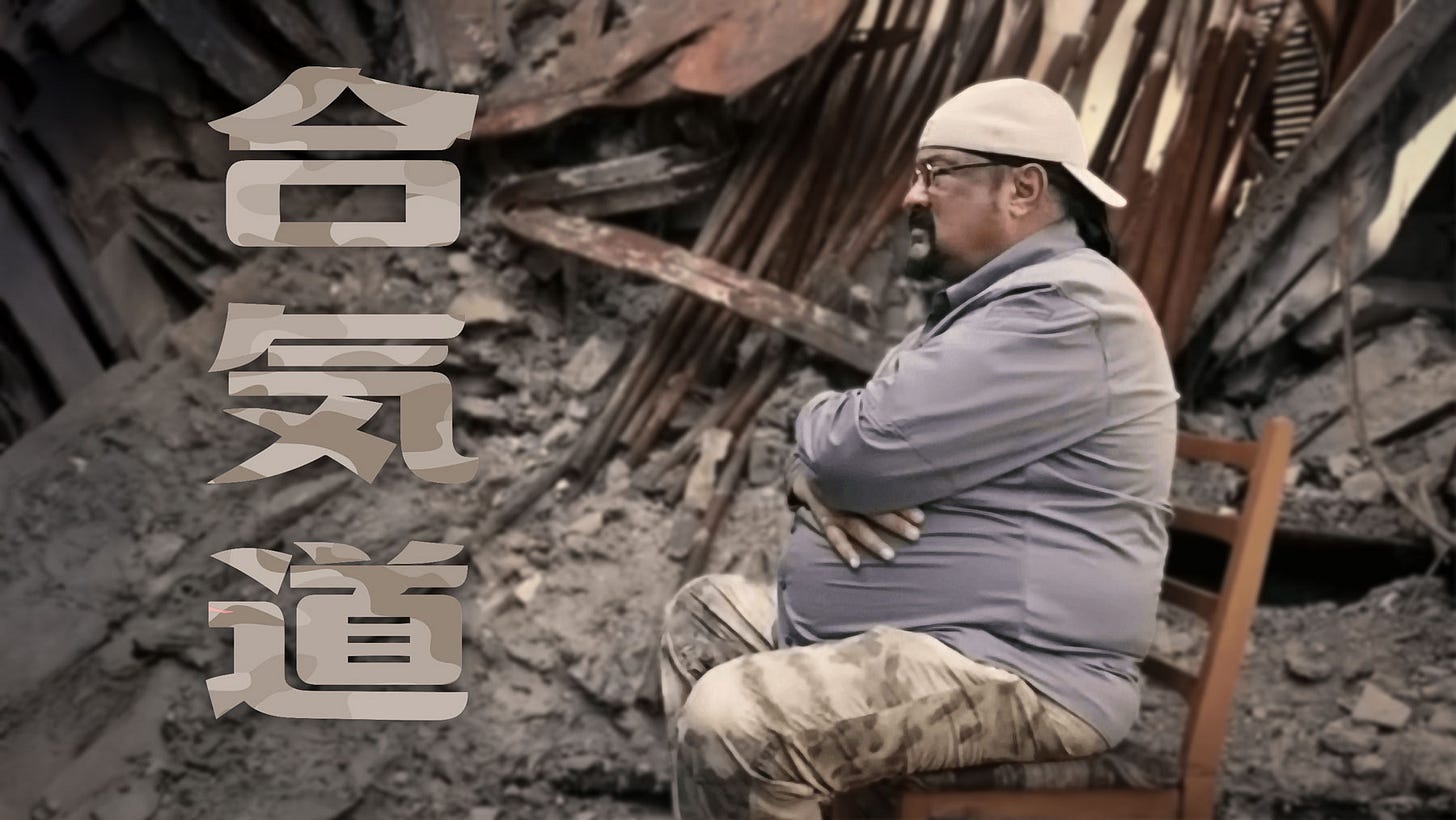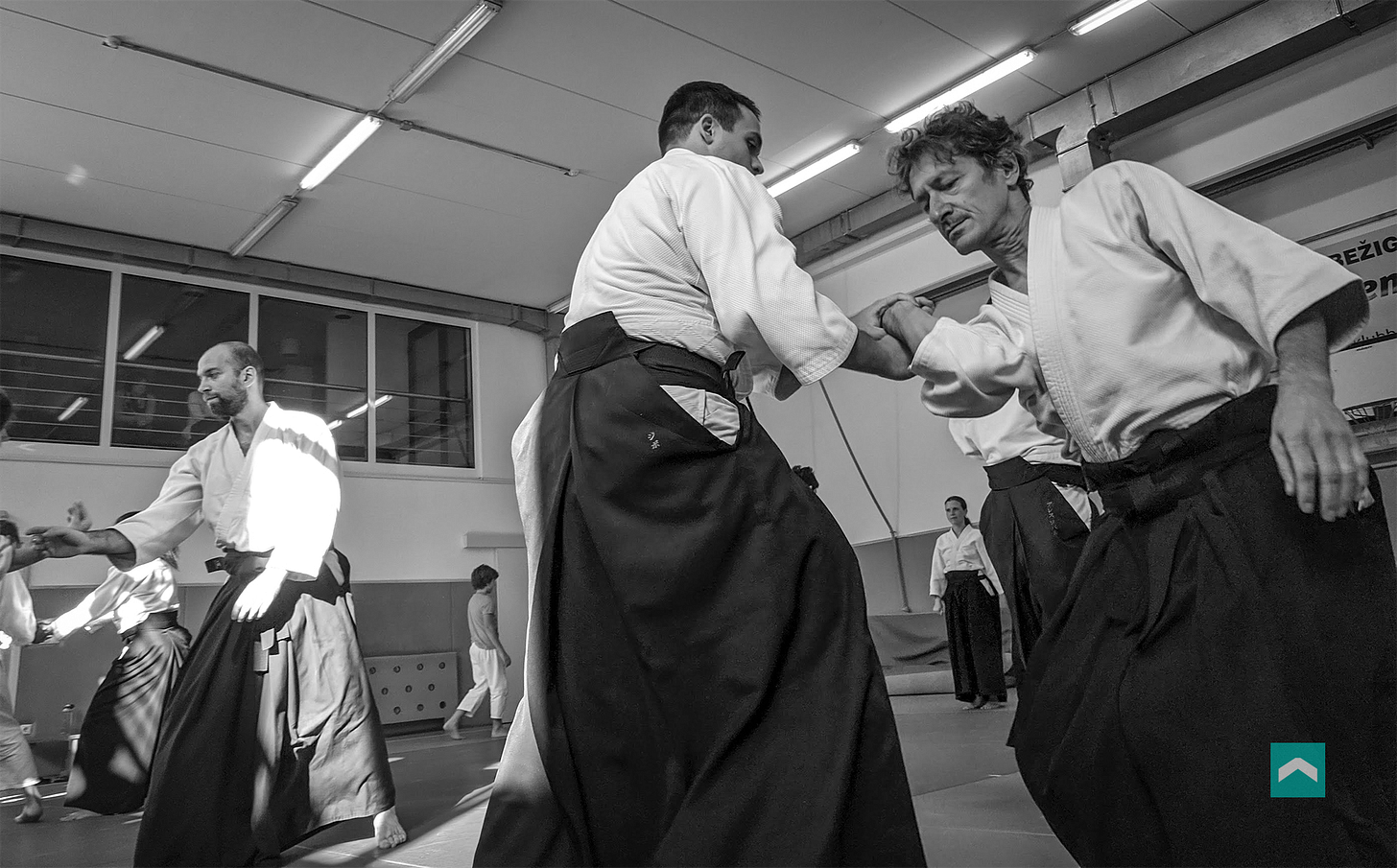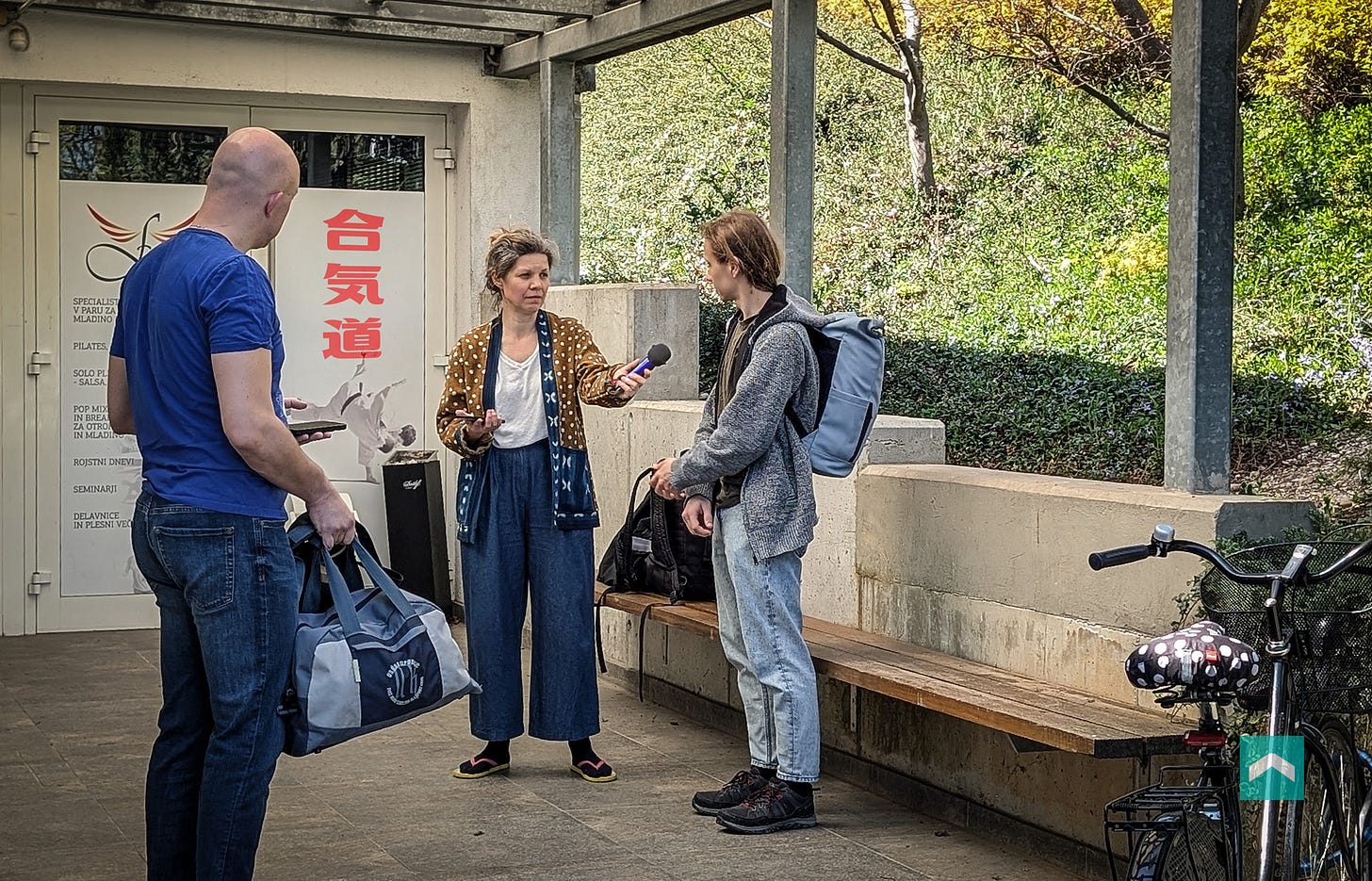How people see Aikido, and what to do about it. Marketing-Do Part 2
Bridging the gap between aikido’s meaning and its perception, and a practical look at Aikido branding
Looking for Part 1? Find it here. TL;DR: Aikido branding starts with understanding how people see your dojo, not just how you see it.
I was at tennis lessons with my son when the trainer asked for my phone number. As he dialed it, so I have his, he glanced at his screen and saw "Aikido Dojo" pop up from Google Maps listing. His immediate response? "Ah, Steven Seagal! And wasn't there some aikido guy who got beaten badly in MMA or some cage fight?"
This happens more often than I'd like to admit. There's always this huge gap between what aikido means to me and what people outside the aikido community understand about it. And this gap definitely affects who decides to try aikido.
Similar conversations with people whose only exposure to aikido comes from Steven Seagal movies or YouTube clips highlight a deeper issue: how clearly do you communicate your value to someone outside the aikido world?
Here's the real branding challenge: If you wanted this tennis trainer in your dojo, what would you need to say to actually get him to try a class?
Understanding the perception gap
Most aikido organizations make the same fundamental mistake: we brand for ourselves, not for concrete people like that tennis trainer.
We talk about "traditional Japanese martial arts" and "harmony" and even "spiritual development." We show photos of formal demonstrations and people in hakama. We use terminology that means everything to us and nothing to someone looking for practical ways to handle stress or build confidence.
The tennis trainer doesn't know what "blending with uke's energy" means. He still remembers Steven Seagal and saw a video of an aikidoka getting dominated in mixed martial arts. That's his entire frame of reference.
When we build our messaging around what aikido means to us and other longtime practitioners, we unintentionally exclude people who could benefit from the practice but don't share our experience or language. The gap isn't just cultural—it's perceptual. If we don't account for how aikido appears from the outside, our message never reaches those who need it most.
Being aware of these perception gaps is already a good first step. It shifts your focus from trying to explain aikido to guiding people toward discovering what problems it can help them solve. Recognizing how people actually perceive what you do (not how you wish they did) is where effective marketing begins. With thoughtful branding, you can communicate aikido's depth clearly and respectfully, without diluting its essence.
So, back to the tennis trainer: I wouldn’t lead with martial arts tradition. I’d say it’s advanced proprioception training for moving efficiently in any sport, learning to redirect energy - which is smart for both kids and adults, and exploring biomechanics that use leverage and timing over strength.
Same aikido, different doorway in.
Values-driven branding in practice
My dojo went through a major transformation over the years. We evolved from aikido-only to a multi-discipline community with karate, kenjutsu, ju-jitsu, fitness, and yoga. There was no grand strategic plan, just a commitment to certain values I would not trade for commercial gain.
Culture was the key. When groups trained here but disrespected others or left garbage behind, they were asked to leave. Money wasn't worth weakening the environment we wanted to preserve.
I spoke with all instructors about our vision: a place of mutual respect where people can develop their potential, strengthen body and mind, and build confidence. We curated the community around those ideals. Some groups moved on, others stayed and thrived. Now, different disciplines share the same wavelength and project our values to the local community, not just through a logo or website, but through what we do every day.
Why branding matters for dojos
Most dojo owners think about branding in transactional terms: "How do I get more students to sign up?" and "How fast will this branding pay off?" But branding works differently. It's relational, not transactional.
I heard this explained perfectly in a recent podcast. Someone asked about the ROI of investing in brand, and the response was: "What's the return on your relationship with your spouse or children?" The relationship itself is the return.
Instead of "What will this branding initiative earn us in six months?" the question becomes "What kind of dojo community do we want to nurture for the next decade?"
Your students don't typically join for quick results, they're looking for a practice they can develop over years. Parents don't enroll children for short-term skill acquisition - they want character development and life lessons. The strongest aikido communities aren't built on aggressive marketing or competitive pricing. They're built on students who can clearly articulate why this particular place matters to them.
That's what branding creates: the conditions where people choose you not just because you're convenient or cheap, but because they believe in what you represent.
The study component: Why you need to learn this systematically
If you want to improve your dojo's branding, you need to approach it like any other skill: study the fundamentals, practice the techniques, get feedback on your progress.
I recommend starting by subscribing to the Marketing-Do series here at Aikicraft. We're working through the practical aspects of branding and marketing specifically for aikido organizations, with real examples and tested frameworks.
Beyond that, read marketing books and apply what you learn. The biggest mistake dojos make is inconsistency: saying one thing on their website, doing something different in class, and missing opportunities to show what they actually believe through daily interactions or online (that includes teachers and students). Your brand message falls apart when there's misalignment between your intentions, communications, and actual behavior.
This matters more than most people realize. Students pick up on inconsistencies quickly. Parents notice when your values don't match your actions. The community responds to authenticity—or its absence.
Discovery through conversations
Before you can fix any branding challenges, you need to understand your current position clearly. This means having conversations with the people who matter most to your dojo's success.
Interview your head instructor, any stakeholders involved in major decisions, selected long-term students, and parents of children in your programs. We'll provide downloadable questionnaires to guide these conversations.
I recommend conducting live recorded interviews rather than written surveys (most aikidokas find it easier to talk about their passion than to write about it). Record the conversations, use AI to transcribe them, and save all the answers in a shared document (Google Docs works well). Then gather all your existing marketing materials—website copy, flyers, posters, emails, anything you've used to communicate about your dojo. We'll feed these, together with interview insights, into AI for analysis.
In our upcoming posts, together with Brandician, we’ll offer structured guidance for the next steps.
Better frameworks for understanding your audience
Here we rely on methods taught in many business schools around the world. One useful tool is the Jobs-to-be-Done (JTBD) framework. Instead of centering your message on the aikido lineage or school you represent, or the class format you use, it helps you look at the outcomes people want and the reasons they choose to train in aikido at your dojo.
In simple terms, a “job” here is just the role or purpose your dojo or aikido practice serves in someone’s life. It’s like asking: when people come to you, what are they really hoping to change, improve, or solve?
The tennis trainer, for example, might be looking to hire something to help him stay fit as he gets older. Or maybe he's looking for something that helps him stay grounded during family tensions. Or perhaps he needs something for his teenage child who doesn't like tennis and is stressed about school.
Same person, but completely different jobs. And each job suggests different messaging, different positioning, different ways to communicate value.
Parents hiring your dojo might be looking for child supervision, confidence building, discipline training, or social skill development. Adults might be hiring you for stress relief, community connection, physical fitness, or personal growth. Understanding the job helps you speak to the real motivation.
Once you understand what job someone is hiring your dojo to do, your brand needs to signal that you're the right choice. That means creating trust.
This is where branding archetypes help. They're universal story patterns immediately recognized by the human psyche - a concept explored deeply by Carl Jung. When your dojo consistently embodies one archetype, your message becomes more coherent, trustworthy, and emotionally resonant.
Are you positioning your dojo as the wise mentor (Sage)? The inclusive community builder (Everyman)? The transformative guide (Magician)? Each archetype attracts different people and suggests a distinct approach to how you communicate.
Moving forward with clarity
The tennis trainer's Steven Seagal associations aren't wrong or stupid. They just don’t tell the whole story. Your role isn’t to give him a history lesson on aikido, but to help him see whether what you offer connects with something he truly wants in his life.
This requires clarity about perception gaps, clarity about your values, and systematic thinking about how different people understand what you provide.
In our next post, we'll walk through the Jobs-to-be-Done analysis process, research your local competition, identify market opportunities, and validate your assumptions about what people actually want from martial arts training.
Thanks for reading Aikicraft! Subscribe for more practical tools to grow your organization.







I understand why do this whole branding thing and all, but it all sounds so superficial and artificial. because if you tell people how your dojo is different or what particular things important in their lives people will be able to achieve through aikido - you start to teach that during your trainings. Instead of teaching aikido in the first place. those are nice outcomes of a genuine aikido practice, but aikido is not about those things.
People don't know what they really need - and it's good! aikido can surprise! Aikido study - attentively follow the teacher's movements. And embody the movement yourself. Of course it's hard, but it's so rewarding if you manage to go through that hardness.
Having said all that and being aikidoka myself :) I like very much what you are doing and agree with many points you raise. To put my remarks in constructive way, I'd like your materials not to give away everything before the person comes to the dojo, I want the materials to enchant and not to shout about aikido. I want them to leave some mystery in which there is the genuine freedom to explore oneself. I want the materials to attract people that can potentially struggle through months of inexplicable hand-foot-body-wawing just because it's interesting for them, not because there is some goal they might reach like better stability, conflict resolution or whatever. So yes, the challenge would be to create marketing that creates internal drivers in the potential student (interest), not the external drivers like real measurable results of their stability at work.
Thanks for the thoughtful comment, Sutasu. I really appreciate that you care about preserving what makes aikido genuine.
You're right about the value of internal drivers and maintaining some mystery. But similar to aikido, marketing needs balance - internal curiosity paired with external credibility. Without measurable results, people, especially younger students, leave shortly after joining.
My dojo stays full compared to colleagues who see marketing as incompatible with traditional Aikido values. The people who come through clear, honest communication about dojo specifics tend to be more committed to the process, not less. That honesty builds trust, which creates the space for genuine exploration you're talking about.
After 25 years of aikido practice and 30 years in marketing, I've learned that authenticity and effective communication aren't opposites - they're partners.